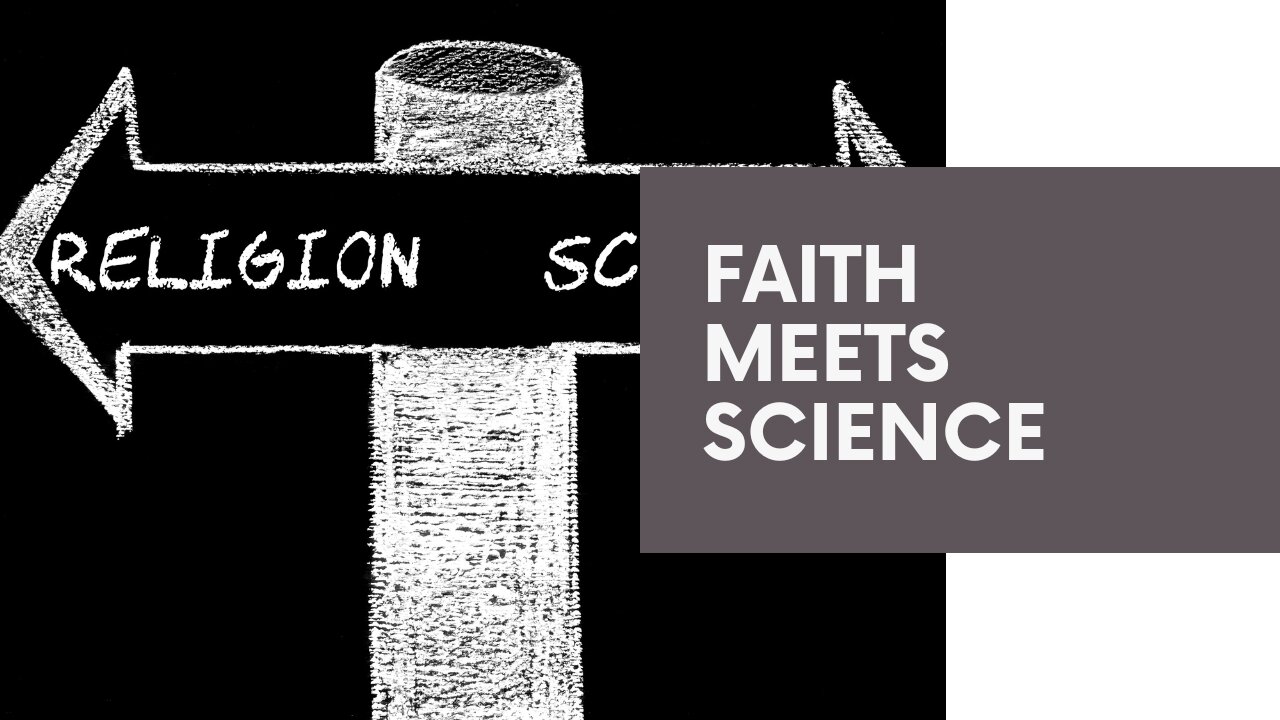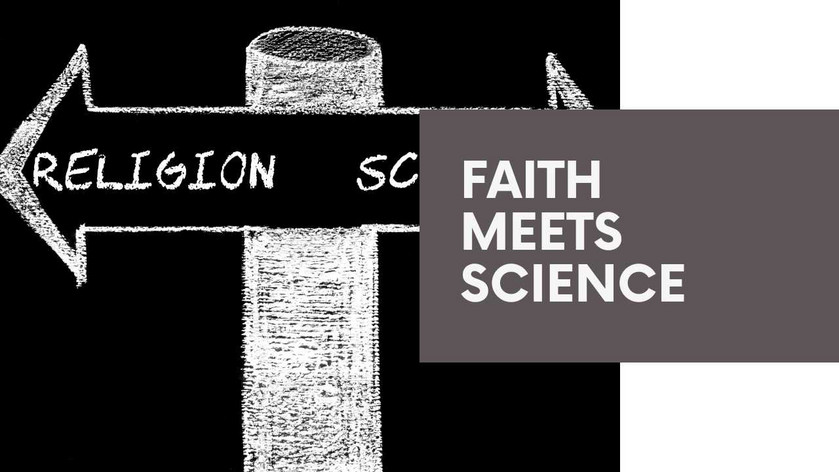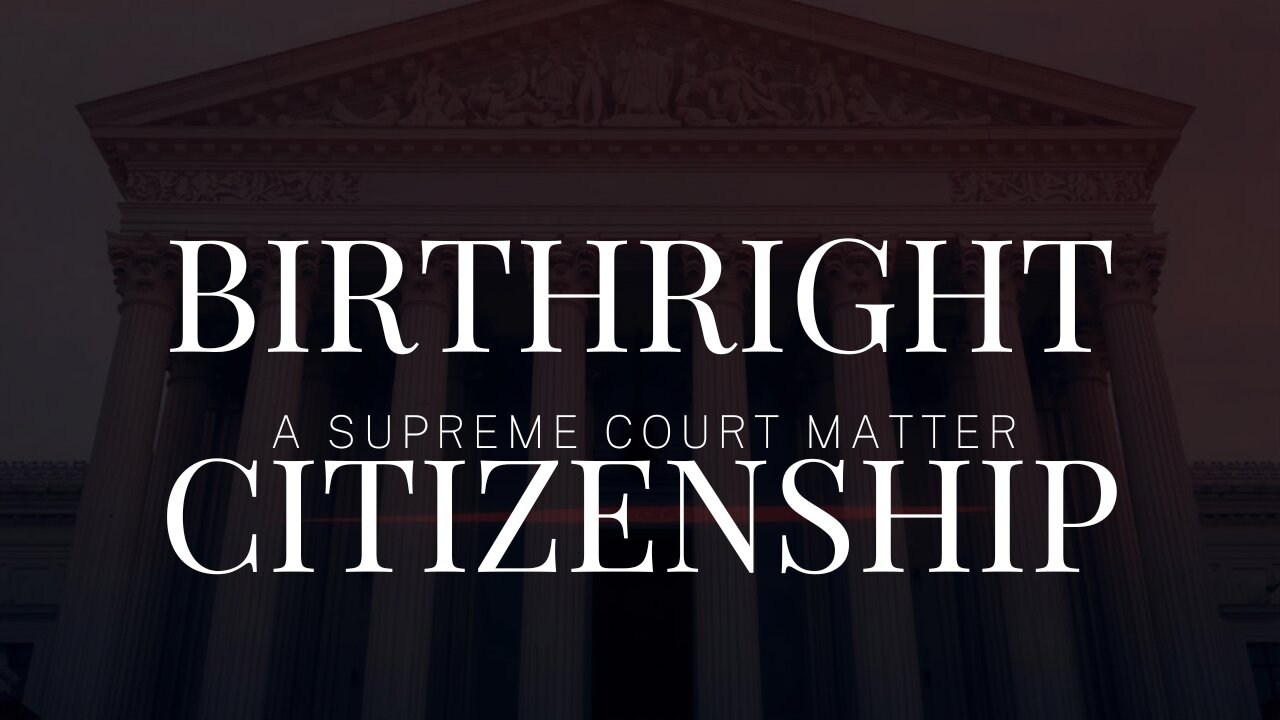Must religion and science remain incompatible? The Global Deep State once insisted they never could be. Now, however, they have found a “useful idiot” (apologies to V. I. Lenin) in Pope Francis, who has watered down the Catholic faith to make it compatible with Deep State-style science. But Christianity (and Judaism) are compatible with science done the proper way.
Religion and science – the latest study
This morning, the professional blog PsyPost carried an “exclusive” report on a new study of compatibility of science and religion. Tellingly, author Vladimir Hedrih posted this in their “Psychology of Religion” section (emphasis ours). Authors Michael E. Price and Dominic D. P. Johnson, writing in Religion, Brain and Behavior, hold that when religion and science “get along” in any given nation-state, its people are in better physical and mental health on average.
They surveyed at least 1000 people in each of 54 countries in all the civilized continents. Men and women took part in roughly equal numbers. The authors took three measures from each participant:
Degree of belief in a “higher plan” for their lives – presumably by a Planner higher than any human being,
Strength of belief in “the power of science to reveal the truth about the world,” and
Membership in specific belief groups.
These belief groups were Islam, Hinduism, Judaism, Christianity, Buddhism, “folk wisdom,” “all others,” “undefined,” “unsure,” agnostic, and atheist.
Those who believe in a higher plan, are healthier than those who don’t. According to Price and Johnson, those who believe in science also are healthier than those who don’t. But a scatterplot of belief systems showing well-being as an apparent function of belief in science shows a slightly negative correlation. Here’s the key: religions systems making the highest allowances for science, while also preserving their assurances of a “higher plan,” do the best for their followers.
What does all that mean?
Price and Johnson admit that those lacking a belief in any higher plan, are worse off, physically and mentally. They also assert that perceptions of incompatibility between religion and science create a worse problem in Western societies than Eastern.
This should surprise no one. Hinduism is notorious for declaring that its pantheon answers everyone’s prayers, whether to that pantheon’s members or to other gods. Furthermore, the Hindu creation story is not as exact as, say, the Jewish creation story (which Christianity accepts fully). Because the Hindu creation story is inexact, Hindus might have no trouble believing that the Grand Evolutionary Paradigm will explain everything about the origin, continued existence, and “change over time” of the universe, this Earth, and life.
Again, the Deep State found a “useful idiot” in Pope Francis, who has definitely compromised the Roman Catholic Church. CNAV believes other such “useful idiots” exist, though none are as obvious as the current pontiff. The Deep State dare not attack Christianity or Judaism directly. The last nation-state to do that (i.e., the Roman Empire), sowed the seeds of its own extinction. So they try to water the faith down, by saying that the Creation story, for example, is merely symbolic.
Price and Johnson assume without question the truth of the Grand Evolutionary Paradigm. But can that Paradigm explain everything? CNAV holds that it does not. So instead of rejecting all science out-of-hand, Christians can reject the incompatible parts – and accept another paradigm instead.
War between religion and science: the Grand Evolutionary Paradigm
Christianity deserves primary consideration as a religion and science battlefield, because the one man who first used a new theory to bludgeon religion, began as a Christian himself. Charles Darwin was born to Unitarians, but did attend schools run by clergy. Nevertheless, he came under the influence of those who rejected any role for God in the creation of life. Thus, “Darwinism” is the best name for “evolution” today, because Charles Darwin, more than anyone else, made the Grand Evolutionary Paradigm what it is.
That Paradigm features:
Hyperuniformitarianism: the notion that all processes observable today, have always taken place, at the same rates, since time immemorial.
Abiogenesis: the notion that life began from non-living matter – by purely random chance.
Common descent: the notion that all living things descend ultimately from one population of alike organism.
“Common descent” sometimes appears as “evolution,” because those defending the Paradigm deliberately separate abiogenesis from the descent of life. More to the point, defenders of the Paradigm insist that if you accept any change from one generation to the next, you must accept such change projecting backward in time – as long as it takes.
Whether Charles Darwin thought his theory through, for its implications for religion and science, remains a mystery with unverified rumor. But his successors definitely used the Grand Evolutionary Paradigm to destroy religion everywhere. Roger Baldwin founded the American Civil Liberties Union for that purpose. His organization put John T. Scopes up to defying Tennessee law to teach evolution.
Three “pathways to peace”
Three specific “pathways to peace” have emerged to settle this war. Understand this: one or the other side winning the war is still a pathway to peace. With that in mind, let us example the three pathways, in order:
Atheistic evolution
Atheistic evolution simply says: forget religion – and specifically Christianity – and accept the Grand Evolutionary Paradigm as the full story. Judeo-Christian scripture specifically says this earth is not much older than seven thousand years. The Grand Evolutionary Paradigm absolutely requires the Earth to be far older.
Before investigators like Henri Becquerel and Pierre and Marie Curie discovered radioactivity, geologists assumed the Earth to be infinitely old. Radioactivity required a new theory to explain it. According to that theory, our solar system and every object in it formed from three supernova dust clouds that collided, coalesced, and accreted. Given the half-lives of the most abundant radioactive elements in the Earth’s crust, the Earth is 4.5 billion years old.
In contrast, Biblical scholarship, and the observations of two comets that have been showing up regularly for all of recorded history, suggest an age for the Earth of seven thousand years. Obviously the atheists throw back their heads and laugh uproariously at the very notion. They think they’ve won the argument because they will not admit that radioactive elements – particularly elements from bismuth (atomic number 83) and uranium (92) ever formed in any environment except a star’s heart before it exploded. That one premise implies another: Earth formed with all the radioactive uranium and thorium (90) it would ever have. So the uranium-to-lead decay series lets us “date” the Earth positively. Find the rocks that have shown the greatest radioactive decay, and you will know the minimum age of the Earth. End of discussion.
Theistic evolution
Theistic evolution says: wait a minute! Even 4.5 billion years does not allow enough time for life even to have appeared. Even if it did, the Cambrian Explosion took place a lot more recently than that! Specifically it took place little more than half a billion years ago. So how could all the living things we imagine, “evolve” from the simplest forms of life in “pre-Cambrian” rock? (Note: “evolutionary geology” applies hyperuniformitarianism to assert that the “strata” that obsess geologists today, formed largely by erosion. That’s why most rock is sedimentary – as opposed to igneous rock that formed in volcanoes.)
So theistic evolution – also known as progressive creation – assumes that a Guiding Hand – a Higher Plan – must exist. In other words, God worked His will to shape life over the tremendous time spans that hyperuniformitarian geology assumes. (Or thinks it has worked out.)
But theistic evolutionists have a problem. Not only must they reconcile the creation story with the “science” of origins, but they must also either reconcile, or discard, another great story in Scripture. That story is of an event that Luke the Physician/Evangelist first called cataclysm – the Mother of All Storms. Before him, the Hebrews gave it a simpler name: Deluge. Theistic evolution simply assumes that this Deluge did not take place. (Speaking of a “Local Flood” is the same as denying that a Global Flood took place.)
Creation science
We now turn to the third solution: creation science. Creation science asks, to begin with, why can’t the Earth be no more than seven thousand years old? Once one admits the possibility, one can readily see that the notion of an old Earth falls apart.
To begin, no one has ever explained how or why, if the Earth is 4.5 billion years old:
Our oceans are not orders of magnitude saltier than they are today,
The Moon is still in orbit around the Earth,
Magnetic compasses still work,
Comet 1P Halley has been coming back faithfully every 76 years and is still naked-eye visible and bright, or
The Gulf of California is not orders of magnitude more shallow than it is.
Furthermore, astronomers have been finding inexplicable things ever since NASA sent Voyagers 1 and 2 on their Grand Tour of the solar system in 1977. But both Voyagers have observed that Saturn’s rings are much more complex than anyone supposed, with patterns that should have faded away millions of years ago. The James Webb Space Telescope has yielded observations that defy the “Big Bang” theory of the origin of the universe.
Old-Earth apologists still insist that radioactivity “proves” the great age of the Earth. But suppose that Global Flood they try to ignore, came about by a process that itself created radioactive materials? If so, the Earth cannot be 4.5 billion years old, because it formed much more recently.
Religion and science come together – by making science obey its own rules
As Linda Goudsmit (Space is No Longer the Final Frontier – Reality Is) points out, the predominant anti-religious belief system is not actual science but scientism – science replacing religion, with all the bad habits of which its practitioners accuse Christians. Certain articles of faith have come to dominate any discussion of the origins of the Universe, the Earth, and life. Among these:
All matter derived from the explosion of a point source, with the formation of hydrogen and helium, then the formation of heavier elements from lighter.
No Higher Plan exists, and no Guiding Hand formed any living things.
Radioactive elements form in nature in stars’ hearts.
We are all star dust, and so is the Earth we live on.
The first living things formed in a primordial soup, with no Hand to guide it.
If one finds our Universe too “lucky,” then we can believe that ours is only one of an infinite number of universes in a Multiverse, that is as large as one must assume to have any degree of “luck” play out. Suppose, then, that the chances of any event or sequence work out to one in a billion. No problem, say the priests of scientism. That only means that the Multiverse has at least a billion universes in it!
Creation science says: that’s cheating. Statisticians tell us, in any case, that if the chances are that small, something made the events happen. Something – or some-One.
Victory in the war
So religion wins here, not by destroying science, but by destroying scientism – the perversion of science with unreasonable dogmas. It also wins by insisting that science play by its original rules. This also should surprise no one – because the Christian faith made possible a system of orderly and rigorous consideration of observational evidence.
Where is now the conflict between religion and science? Instead of conflict, we have peace – and all that science must do is stop sacrificing rigor to dogma.
Furthermore, well-being can increase even further, once one discards the ambitions that proud people entertain, about improving the human condition – or even the Earth’s weather and climate – through human intervention. Pride is, of course, one of the Seven Deadly Sins, and might even be the basis for the other six! The construction of a model of nature that excludes God is certainly a proud act – in the negative sense. And as Solomon the Wise reminded us, pride definitely goes before destruction.
So let human beings lay aside such overweening pride, and religion and science can be compatible – in ways that will make the human condition even better.
Link to:
The article:
Video:

Post in PsyPost:
Price and Johnson study:
https://doi.org/10.1080/2153599X.2024.2363773
Earth is 7000 years old – so?
https://cnav.news/2017/09/20/civilization/christianity-today/creation/earth-7000-years-old/
Global flood astronomical date:
https://web.archive.org/web/20141022200420/http://creationsciencehalloffame.org/defenses/ark-flood/global-flood-an-astronomical-date/
Declarations of Truth X feed:
Declarations of Truth Locals Community:
https://declarationsoftruth.locals.com/
Conservative News and Views:
Clixnet Media























